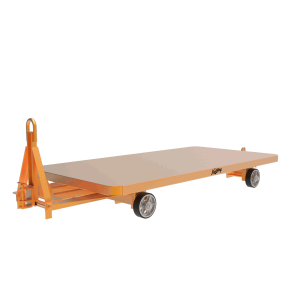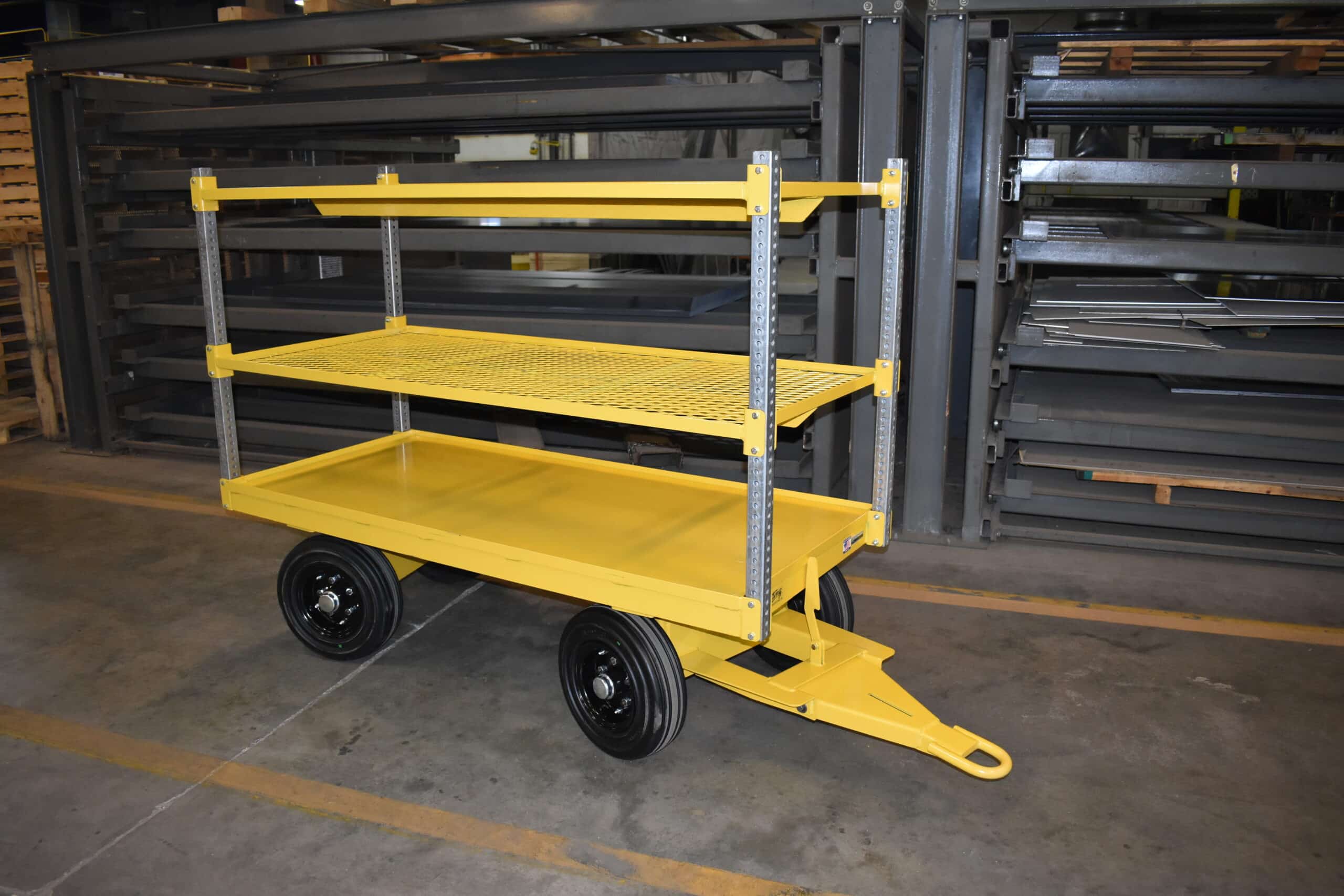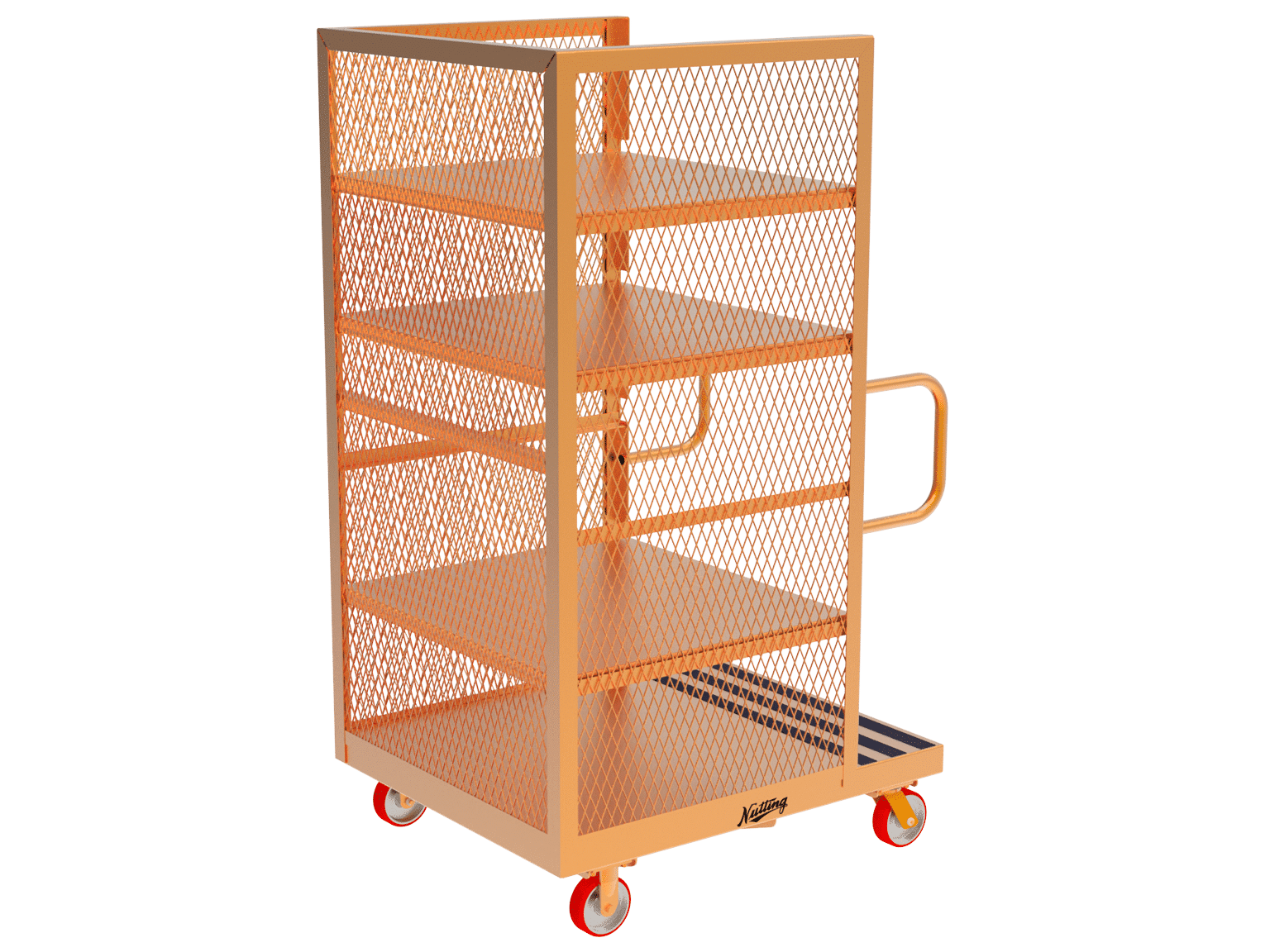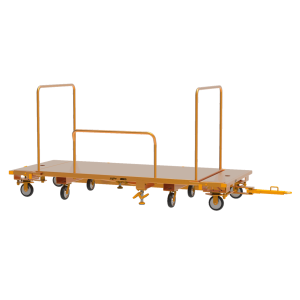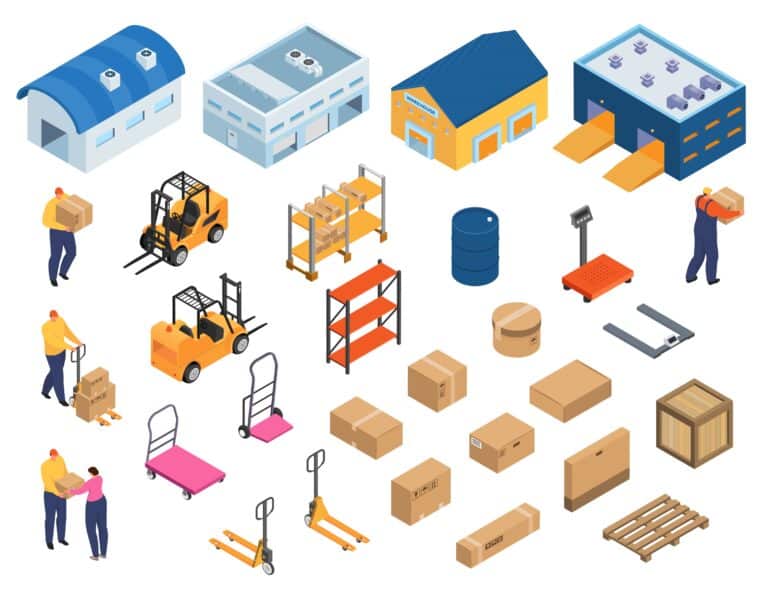
Defining the Objectives of Proper Warehouse Setup
The primary step in setting up an efficient warehouse is outlining clear objectives. Whether it’s optimizing space utilization, minimizing overstock, or improving order fulfillment, these goals guide the warehouse layout and operational processes.
Technology in warehouse management
Modern warehousing largely relies on technology, with Warehouse Management Systems (WMS) being a core element. These systems automate various paper processes, enhance workflow, and reduce common warehousing mistakes. They can be pivotal in managing inventory levels and picking paths, ultimately leading to better customer satisfaction.
Good inventory management
Maintaining a balance in inventory is important for preventing holding excess inventory or falling short on stock. A well-planned warehouse setup incorporates efficient receiving areas, proper labeling, and strategic storage locations, all of which contribute to sound inventory management.
Effective communication & Staff Development
Communication is key to avoiding bottlenecks in warehouse operations. This extends to training and development for staff, ensuring pickers, forklift operators, and other personnel understand their roles and the overall warehouse processes. Effective communication is also vital in areas like the shipping area, where clear signage and correct labeling are necessary.
Development opportunities for your staff also shouldn’t be overlooked. A well-trained and knowledgeable workforce is the backbone of an efficient warehouse. Investing in training programs for your employees can boost their productivity, increase job satisfaction, and reduce the likelihood of operational mistakes.
The above elements, when orchestrated well, lead to a well-organized warehouse layout, efficient use of warehouse space, and, ultimately, a profitable operation. The next sections will explore the other necessary aspects of warehouse management, highlighting the significance of factors like order picking, common mistakes to avoid, and potential areas for future growth.
The Significance of Proper Warehouse Layout
An efficient warehouse layout is the catalyst for effective inventory management, playing an important role in safeguarding your supply chain’s integrity.
When you’re planning your warehouse layout, every square foot matters. You need to assess your existing warehouse floor plan, evaluate your storage areas, analyze your warehouse processes and workflows, and carefully study traffic patterns. By doing so, you can make sure your warehouse’s capacity is efficiently utilized while you minimize the risk of operational errors and accidents.
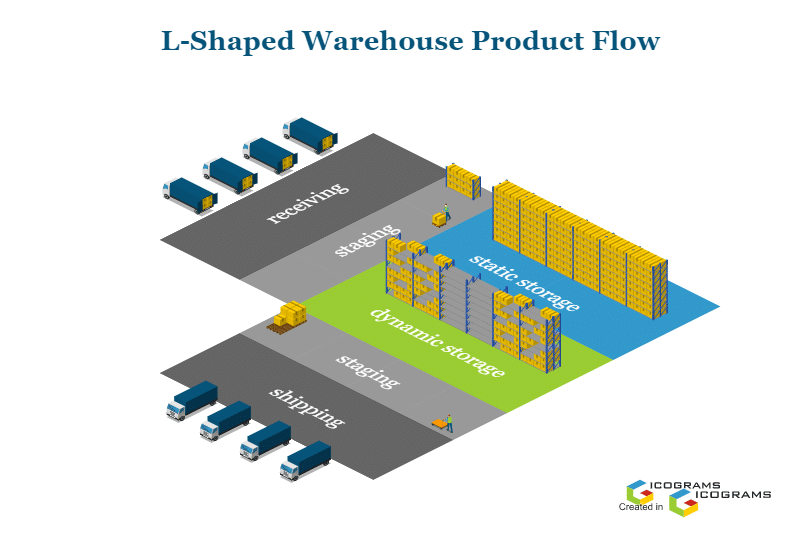
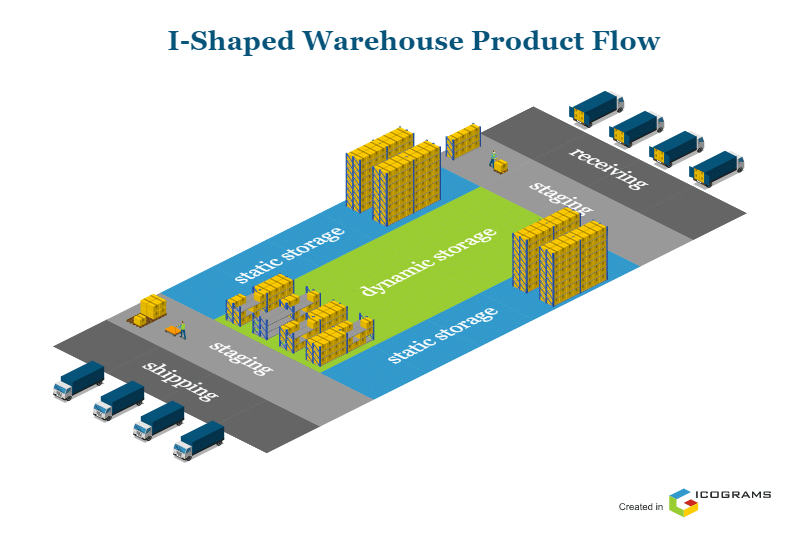
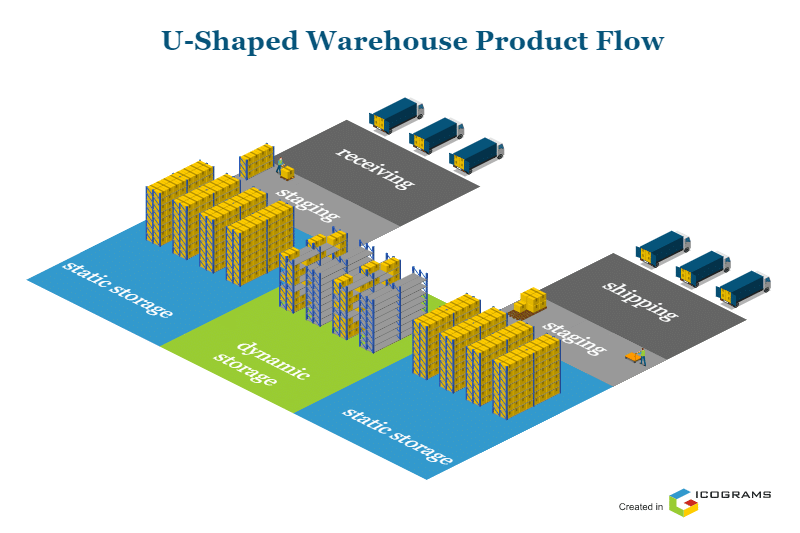
Fundamental Aspects of Warehouse Management
Warehouse Management Systems (WMS)
Utilizing WMS can greatly enhance warehouse operations. These systems help automate numerous processes, such as inventory tracking, picking path management, and demand prediction, which lead to operational efficiency and reduced errors.
Inventory Management
This involves maintaining an optimal balance of inventory to prevent overstocking or shortages. Effective inventory management strategies include proper labeling, efficient receiving areas, and strategic storage locations.
Picking Path Optimization
This is the process of planning the route that pickers take to collect items for shipment. An optimal picking path minimizes travel time within the warehouse, leading to increased order-picking efficiency.
Space Utilization
Maximize warehouse space by using suitable racking systems and making efficient use of vertical space. Space utilization also involves using tailored equipment to suit the specific needs of your warehouse.
Receiving and Putaway Procedures
Efficient procedures for receiving goods and putting them away in designated storage locations are essential for smooth warehouse operations. This also includes immediate inspection, verification, and recording of incoming shipments in the inventory management system.
Order Picking and Packing
Efficient order picking and packing processes are critical to reduce errors, speed up order fulfillment, and improve customer satisfaction.
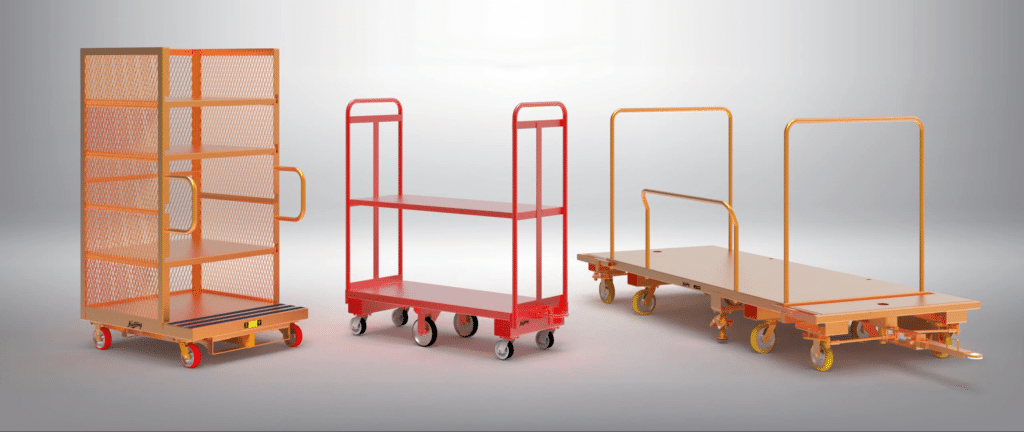
Shipping Procedures
An organized shipping area with clear procedures for packaging, labeling, and dispatching can greatly reduce order processing times.
Workforce Training
Regular training and development for warehouse staff, ensuring they understand their roles and the overall warehouse processes, are essential for avoiding operational bottlenecks and enhancing productivity.
Safety Measures
Implementing robust safety protocols, clear signage for navigation, and providing necessary safety equipment can prevent accidents.
Continuous Improvement
Regularly reviewing and improving warehouse operations based on collected data, feedback, and industry advancements can help keep your warehouse efficient and competitive.
Sustainability Practices
Incorporating sustainability into warehouse management, such as energy-efficient lighting or equipment, waste reduction, and recycling programs, can reduce your environmental footprint and potentially lower operational costs.
That said, even efficient warehouse layouts and management systems can crumble if common mistakes aren’t identified and rectified.
Common Missteps in Warehouse Setup and Strategies for Mitigation
From managing paper processes and batches to putting up proper signage and providing development opportunities, every detail can significantly impact your warehouse’s effectiveness.
Paper Processes
One of the most common mistakes in warehousing is clinging to outdated paper processes. While these methods may have been effective in the past, they lack the speed, accuracy, and efficiency of modern digital solutions. Paper-based systems are prone to human error and can impede the speed of warehouse operations. Transitioning to digital systems, such as Warehouse Management Software (WMS), can improve inventory management, reduce overstock, and streamline order fulfillment.
Warehouse Signage
Signage in a warehouse is more than just labeling – it’s about directing operations efficiently and safely. Poor signage can lead to confusion, mistakes in picking, and even accidents. By implementing clear, comprehensive signage, you can improve navigation, safety, and operational efficiency.
Storage Locations
The utilization of storage locations can significantly impact your warehouse’s efficiency. Improper use of space can result in overcrowding, making it difficult to access items and slowing down your operations. By implementing a system that optimizes storage locations based on the size, weight, and frequency of picking, you can significantly enhance warehouse performance.
By identifying common pitfalls and implementing strategies to counter them, you can ensure that your warehouse is set up for success.
For an in-depth understanding of how warehouse process flow can boost operations, this detailed exploration can be a valuable resource.
Ignoring Ergonomic Design
Many warehouse setups overlook the importance of ergonomics in their design, which can have a profound impact on worker productivity and health. Inefficient designs might have high-frequency items placed in hard-to-reach areas, involve unnecessary bending or lifting, or require prolonged periods of standing or walking. This could lead to worker fatigue, decreased productivity, and an increased risk of work-related injuries. Instead, warehouse setup should prioritize worker comfort, safety, and ease of access. This can involve things like placing high-frequency items at waist height for easy reach, using equipment that minimizes physical strain, and setting up workstations that are adjustable to different workers’ needs.

Failing to Plan for Growth
When setting up a warehouse, it’s crucial to not only consider current requirements but also future needs. A common mistake is neglecting to leave room for expansion or failing to establish procedures that can scale with the business. This can result in a warehouse quickly becoming cluttered and inefficient as the business grows, leading to higher costs and slower service. Warehouses should, therefore, be designed with flexibility in mind, with scalable procedures, modular storage and racking systems, and space for potential future expansion.
Future Warehouse Growth and Efficiency
Effective warehouse layout is an indispensable component of modern business operations. It is key for minimizing labor costs, optimizing space utilization, and ultimately, paving the way for future growth and efficiency.
One major factor driving change in the warehousing industry is the boom in e-commerce. The rapid rise of online shopping is necessitating faster and more efficient order fulfillment processes, which in turn, require more advanced warehouse operations. This shift means traditional practices need to adapt to remain competitive.
It’s important to consider the technological advancements at our disposal. A great example is the use of electric tuggers. This solution offers a way to streamline warehouse setup and operations, enhancing productivity and safety. The MasterMover electric tuggers are designed to provide a reliable, efficient solution for moving heavy loads, making them a valuable tool in any modern warehouse setup.
Staying competitive in today’s fast-paced market requires foresight, flexibility, and the savvy application of technology. To find out what it would take to get a tugger system set up in your facility, contact our team today.



